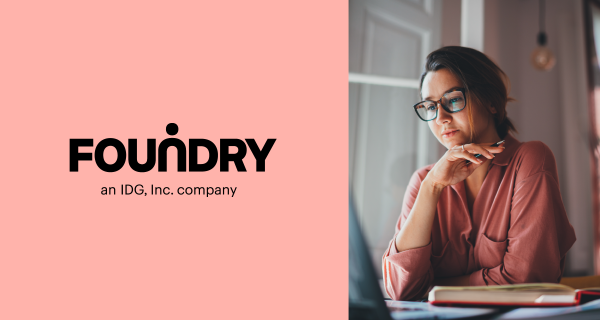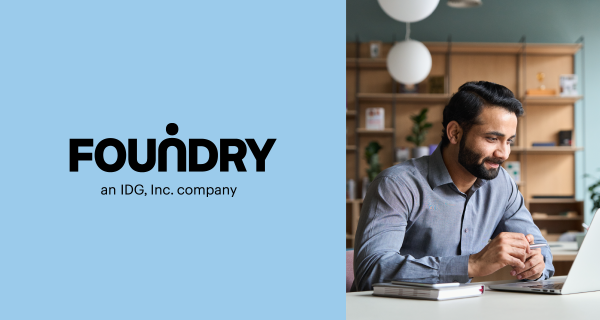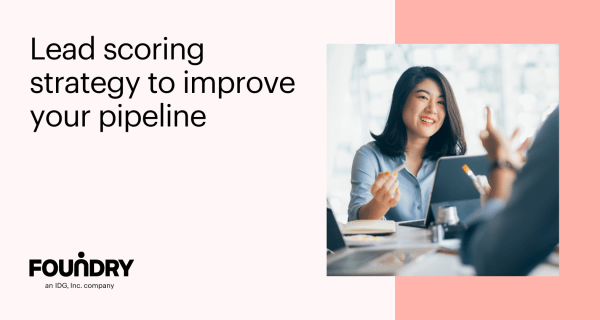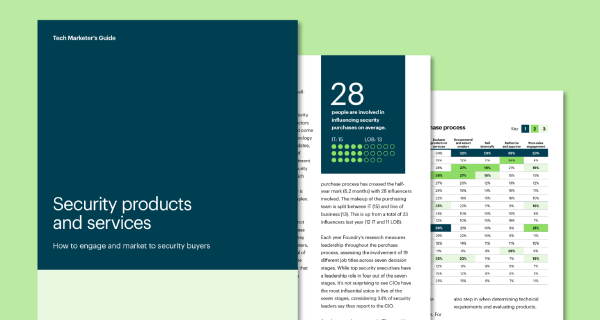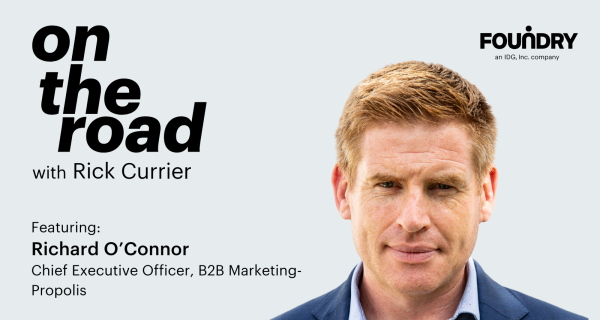The B2B landscape of 2019 is almost unrecognizable. Because of the COVID-19 pandemic and inability to facilitate in-person sales, organizations sought new ways to keep the sales ball rolling. Businesses of all types and sizes adopted new technologies, tactics, and engagement strategies as a crisis response – all under the digital umbrella. Now, digital has become the linchpin of B2B sales for increasing transactions and sales development is at the forefront.
The likes of McKinsey, Gartner and Forrester have published reports on this disruptive change, finding that B2B selling is now all about predictable and scalable revenue generation, not old-school superstar sellers of old.
Why is this happening?
Because digital offers a seamless, consistent and personalized buying experience. The digital catch-up that many organizations undertook as a response to COVID-19 has been an eye opener for finding solutions to keep up with the ever-changing market.
It’s just not B2B sellers that want to continue with the digital mindset. Customers have belief in the efficacy of digital, as it is matching the B2C experience they have enjoyed for many years. A McKinsey study revealed 80% of B2B customers are now entirely happy to deal with vendors remotely, or via digital self-service.
The acceleration of digital solutions has helped B2B organizations implement:
- Improved support for customers and suppliers
- Enhanced agility to respond to new trends and markets
- Personalized sales funnels that adapt to customer history and behavior
Simply put, buyers have gotten used to new ways of making transactions. Self-service options, multi-channel environments, personalized customer journeys, video and live chat and revamped media and landing pages provide prospects with a convenient and satisfying buying experience.
Meanwhile, B2B organizations have made gains with the use of new digital tools, such as sales intelligence platforms, sales enablement platforms and sales engagement platforms – all of which have driven intelligent, efficient and predictable sales processes.
What has helped facilitate these organizational changes? Sales development.
The rise of the sales development team
As described in the Bridge Group’s 2021 Sales Development Report, since COVID-19, there has been a sharp increase in the number of SDRs on the payroll, largely remote. This has been especially important for growing organizations. In 2021, 64% of surveyed organizations stated they work with remote sales development representatives (SDRs) – up from 48% in 2018. Additionally, 23% of companies stated plans to implement fully remote SDR groups.
The sales development function has become recognised as a priority for organizations seeking to leverage new ways of working and converting leads.
The shift towards sales development is sensible in the pandemic’s context, where reserved and economically pressured customers would only make a purchasing decision if all their boxes were ticked. This meant more scrutiny, longer and few sales opportunities, more touchpoints, and ultimately more convincing. This is where sales development excels, as they are on the frontline to leverage new technologies that enable them to:
- Guide leads higher up the funnel
- Maintain consistent engagement
- Keep leads in the pipeline for longer
- Accelerate early pipeline and lead generation activity
- Find new lead opportunities
- Enhance cross selling and upselling
The driving force for new technology
Sales development is essential for streamlining sales and qualifying leads. They serve as the first point of interaction when Marketing Qualified Leads (MQLs) are passed on from marketing, and they maintain engagement up to the stage where they become Sales Accepted Leads (SALs) and are ready for a sales call.
Want to know what technologies are right for your sales development team?
Report: Technology for sales development: a guide for decision-makers
Learn about:
- The rise of the big sales technology platforms
- Building your own tech stack for sales development
- Standalone sales technologies
This function is incredibly important. Without it, deals wouldn’t close. Sales would get bogged down by prospects that are not suited to the seller, nor the ideal buyer profile.
An array of technology solutions have gained in value for B2B sales, with current market and societal conditions increasing the need for more prospecting, calling, and data analysis to create high-value touchpoints that consistently delight leads.
With the growing acceptance of sales development in the customer lifecycle, here are some of the major technologies B2B sales have raced to adopt as part of the technology stack.
Sales engagement platforms
Sales engagement platforms have seen substantial adoption since 2019, as a highly effective way to optimize the selling process in a unified interface. They focus on the interactions between the prospect and the SDR, and help execute processes, track and measure prospects in the funnel, and optimize interactions across multiple channels.
The sales engagement platform sits on top of the CRM, which enables it to use prospect data to build personalized communications. This means that manual processes such as email sequencing, activity capture and prospecting can largely be automated, increasing the ability of SDRs to reach prospects at scale.
Sales enablement platforms
Sales enablement platforms are tools that help educate leads at every stage of the sales funnel with relevant and personalized content. It fosters trust in the seller’s organization and its services, and its ability to solve the business issues of potential buyers.
In practice, sales enablement platforms connect content to the sales cycle. They provide full visibility of the lifecycle of content and its usage, to help determine what works, what doesn’t, and how to best match content to a prospect. They are vital to ensure content is proactive, speaks to leads, and can be best used by SDRs, marketing and sales.
Why is this important? Content that speaks to prospects by responding to their unique challenges is hugely powerful. IT decision-makers are spending more time engaging with online content, with 49% increasing the time they read online and 48% increasing the time they watch online videos. And 72% of tech buyers are more likely to consider an IT vendor who educates them through each stage of the decision-process.
Learn more: What is sales enablement?
Lead scoring automation
Lead scoring automation identifies what leads have the most potential value for the seller by assigning a value to a lead to determine its worthiness. For example, it can help determine how likely a lead is to buy, in what timeframe, and the value of the purchase.
A lead scoring system scores leads based on how they engage with the seller, as well as demographic and firmographic information. For example, a lead that frequently attends webinars will have a higher score than a lead that opened a single email. And a lead that is a decision maker with the right job title will score higher than a lead that has a junior job title.
With lead scoring automation in place, the sales development team will not only know what leads to focus on, but they will also have a clear picture of who the lead is in fine detail – from demographic information, to how they have interacted with the seller, and what their business challenges are.
Learn more: Tips to set up a lead scoring strategy to improve your pipeline
Lead nurturing automation
Lead nurturing refers to the marketing and SDR efforts that are used to turn an MQL into an SAL. It is essential for seizing opportunities to move leads down the sales funnel and turning them into buyers through relevant content and personalized engagement, as opposed to forced marketing.
However, lead nurturing strategies require consistent, personalized and timely contact.
Manually guiding and monitoring each lead through the sales funnel takes up time and resources on activities such as building lists, managing leads, assigning qualification scores, creating emails, managing lead nurturing workflows, and more.
The answer? Lead nurturing workflow automation. The core benefit is taking those manual and repetitive tasks, and letting automation do the job. Through automation, sellers can send as many lead nurturing emails and set up as many workflows as the company requires – all without resource constraints.
Learn more: How to automate your lead nurturing strategy
1st and 3rd party intent tools
Today’s prospects know how to do product research and prefer buying remotely, a trend which is likely to continue beyond 2022 and post-Covid. Considering the digital way of doing business, B2B organizations are investing more in tools to capture first-party and third-party intent data that can help SDRs understand prospects in fine detail.
Both sets of data are valuable for finding leads that have a clear business need for the seller’s solutions.
First-party intent data is derived from data the seller has collected from any interaction across the entire seller’s ecosystem leads, from event attendance to campaign clicks, website visits and content downloads. The data generated from these interactions is demographic and firmographic data. The more demographic and firmographic information that can be collected, the better the seller can understand products and services the leads are in the market for, and how to better target them with precise lead nurturing campaigns.
Examples of first-party intent data:
- Company revenue
- Number of employees
- Industry
- Location
- Amount of products sold or service subscribers
- Fiscal year end
- Geographical location
- Job title
- Industry of expertise
- Years of experience
- Job role
- Decision maker authority
Third-party intent data is collected from websites that the seller doesn’t own. It looks outwards and takes into consideration the fact that prospect decision-making is multifaceted and is not only based on the lead, but also other stakeholders and colleagues in the organization. It also helps to understand the wider industry and how to capitalize on gaps in third-party offerings.
For example:
- Website registration
- Content downloads
- Content conversions (whether it is lead gen, educational, reports)
- Email open rate and click through rate
- Demo requests
- Newsletter sign ups
- Social media engagement
- Landing page hits
Both sets of data enable sellers to research and engage with prospects at the beginning of their decision-making journey. First and third-party intent data tools can score activities such as registrations, website searches, content downloads, and visited domains to give a better picture of other decision makers associated with the lead. It shines a light on what company websites, products, competitors or topic clusters they are interested in, as well as the challenge areas a prospects’ organization is trying to resolve.
Learn more: Sales technology for sales development teams
Sales development playbooks are the new norm
B2B companies are organizing their sales strategy around the customers’ decision-making. This marks a shift away from the sales professional as the prime commercial channel, and more towards data and analytics that pinpoints where the prospect is in their journey.
This shift is vital to meet digital expectations of B2B buyers in the post pandemic world. The engagement of the “everywhere customer” as Gartner puts it, is all about guiding and influencing their journey, by making leads feel confident when they make their purchasing decision.
Guessing is no longer enough. Guided experiences are in, and they must be consistent and driven by meaningful conversation.
A playbook will help plan the best kind of engagement for each prospect. This formalizes the lead nurturing process to ensure that each lead segment is receiving the best possible engagement defined by their stage in the funnel and their business challenges.
Playbooks aren’t one-size-fits-all strategies, but bespoke guides for individual organizations. More and more businesses are creating, or outsourcing playbooks, based on data from all areas of the sales pipeline. Data derived from closed deals, content assets, ideal customer profiles, technology stack, and more, are all highly valuable for creating engaging experiences for prospects.
From a lead nurturing playbook to a lead scoring playbook, the key elements that make it work are:
- Data visibility: Accurate data is fuel for sales development efforts. The capability to de-anonymize leads, and take information such as content downloads, engagement levels, and demographic data, and leverage it to guide leads towards a sale is invaluable.
- Prioritization capability: Whether process driven or AI driven, a playbook that helps determine which prospects are a priority will ensure that resources are being allocated efficiently. This unclogs the sales funnel, ensuring that leads who are more likely to buy are engaged foremost.
- Automation: The more prospects an organization has, the more it will struggle to offer each one a personalized and authentic experience without the help of automation.
Automation improves efficiency and removes time-consuming manual tasks from the equation. From automatically adding prospect data into CRMs, to ensuring that leads are followed up and engaged regularly, and ensuring that data is on hand and actionable. Automation supercharges the output of the sales cycle, from a reactive and ad hoc activity, to proactive activity that helps facilitate a personalized and timely buyer’s journey for each lead.
- Reporting and analytics: Learn from mistakes and capitalize on successes. With access to real-time data, SDRs can view key metrics such as open rates, scroll maps, links clicked, read time and more – providing actionable data on how to improve workflows over time.
- Structure and flow: A playbook that welcomes a new lead into the sales funnel will be unique compared to the playbook for nurturing a lead that has been in the funnel for an extended period. Each strategy should be fine-tuned to best engage the prospect at their stage in the funnel.
Learn more: 6 Effective Lead Nurturing Strategies for 2022
Working with Foundry Sales Development Services
At the height of COVID-19, sales pipelines shrank as prospects reduced expenditures and in-person meetings were suspended. As a result, B2B organizations had to adapt to shake off digital fear.
There has been a lot of change in the B2B world, with changes in sales organization, technology priorities, workforce location, as well as customer preferences. It can be a lot to get to grips with, especially for growing organizations that need to scale at a pace that cannot hire and keep a sales development team to help facilitate and make a success of the focus on digitization.
Outsourcing is a great utility for organizations that don’t have the resources, management experience, time nor expertise, to staff and train an in-house sales development team. Outsourcing can be the answer, as it provides access to skills, people, technology and expertise in a comparatively small cost package when compared to an in-house team.
At Foundry SDS, we guide each customer’s journey toward conversion on your behalf, operating as a seamless extension of your in-house business development team. Once we bring your leads to the right level of maturity, we hand them off to your sales team for final conversion.
If you outsource sales development, you don’t have to worry about setting up lead nurturing workflows, qualifying and segmenting leads, salaries, technology and licensing, office space, recruiting, training, and onboarding.
Foundry SDS are lead nurturing experts. We will create a bespoke lead nurturing program to deliver high-quality leads that fit the buyer persona of your business development strategy.
Outsourcing lead nurturing and sales development will take care of all the lead nurturing challenges and costs with a single package. And you gain the expertise and speed of the company that specializes in sales development.
Learn more about our services here.
What’s next? Technology for sales development: a guide for decision-makers
